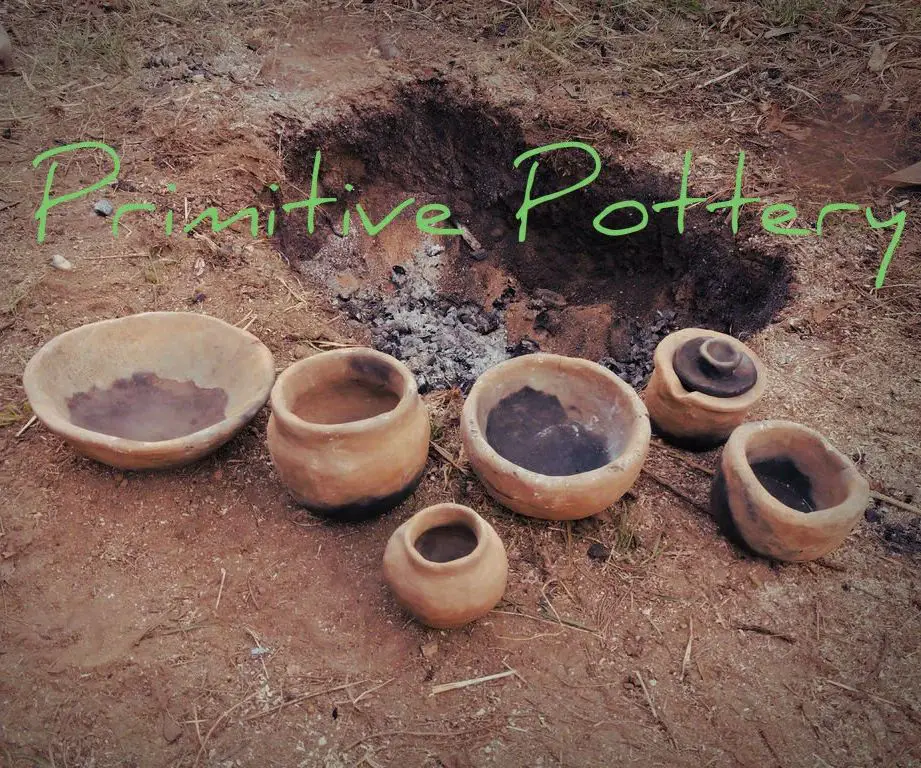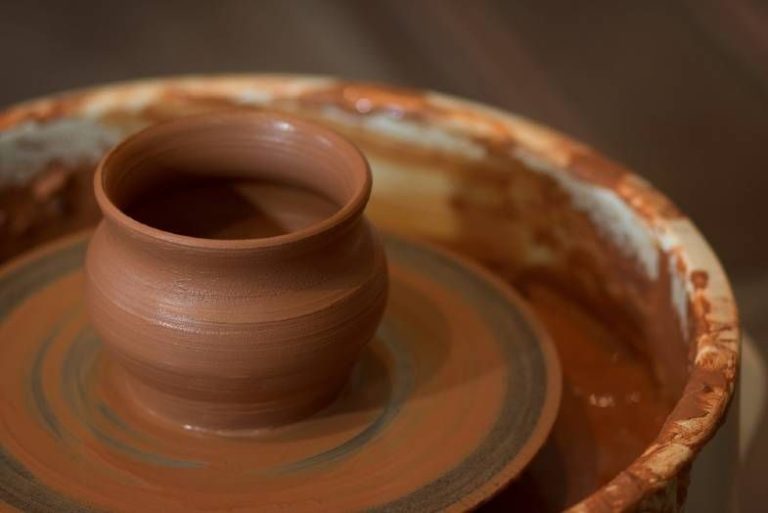Can You Fire Clay Without A Kiln?
Firing clay is the process of heating clay in a kiln to high temperatures in order to permanently harden and finish the clay. During firing, chemical and physical changes occur in the clay body that cause the clay to become hardened, insoluble, and infusible. There are multiple methods for firing clay, ranging from low-temperature earthenware firing done between 1100-2100°F to high-temperature stoneware and porcelain firing done between 2200-2400°F. Firing completes the transformation of clay into a final ceramic product and is a crucial step in pottery and ceramic production.
Traditionally, firing clay requires the use of a kiln to produce and sustain the high temperatures needed. However, there are some alternative methods that allow firing clay without a kiln. While not as common, techniques like pit firing, raku firing, and saggar firing use external heat sources like fire, smoke, and sawdust to fire clay. These alternative methods allow firing at lower temperatures with unique effects. This article will provide an overview of firing clay and discuss methods for achieving fired clay results without the use of a standard ceramic kiln.
Heat Requirements for Firing Clay
Firing clay requires exposing it to high heat in order to permanently harden it through a process called vitrification. During vitrification, the silica and other minerals in clay melt and fuse together to create a glassy matrix that gives clay its hardness and strength.
There are several stages that clay goes through during the firing process:
- 100-200°C – Clay releases any remaining water and organic matter.
- 500-600°C – Clay structure starts to change as minerals like quartz begin melting.
- 900-1060°C – Quartz fully melts, forming glass. Clay becomes hard and vitrified.
- 1150-1300°C – Mullite formations within clay. Silica converts to crystalline compounds.
The final firing temperature depends on the type of clay body and whether the pieces will be glazed or not. For bare earthenware, firing temps around 900-1060°C are common. Stoneware requires higher temps of 1100-1300°C for full vitrification and strength (source). Higher temperatures allow clay to become non-porous and reach maximum hardness.
Monitoring the firing temperature is crucial to achieve proper vitrification without deforming the clay pieces. Kilns allow carefully controlling the firing schedule for optimal results.
Firing Methods Without a Kiln
There are several traditional methods for firing clay without using a kiln. While they can produce beautiful results, firing without a kiln requires careful preparation and has some limitations compared to kiln firing.

Campfire
Firing pottery over an open campfire is one of the most basic methods. The clay pieces are placed into the hot coals and ashes of the fire. Care must be taken to protect items from direct flame exposure and control the temperature. Results can be uneven, with more exposure on side facing the fire. Simple forms with thicker walls tend to survive best. according to Soul Ceramics.
Pit Firing
Pit firing involves digging a pit and building a fire in the bottom to heat surrounding ground and rocks. Once the pit is hot enough, the fire is extinguished and pots are lowered in and covered for firing. Combustible materials like sawdust, leaves, or dried dung can be added for smoking effects. Pit firing gives a natural, earthy look but can be hard to control and risky for delicate pieces, as noted by Ancient Pottery Guide.
Raku Firing
Raku is a specialized technique developed in Japan involving quickly firing pots in a hot kiln, then removing them at peak temperature and dropping into containers with combustible materials. This creates dramatic crackled glazes from the rapid cooling. Raku firing requires carefully formulated clay and glazes and very hot kiln temperatures, so it is not necessarily easier without a proper kiln.
Saggar Firing
In saggar firing, pottery is placed into heat-resistant containers called saggars before going into a kiln. The saggars protect items from direct flame and allow effects from introduced combustibles. The method can be adapted for pit firing by using improvised saggars, but controlling results is difficult according to Soul Ceramics.
Using a Campfire
Firing clay in a campfire is one of the easiest and most accessible ways to fire pottery without a kiln. It has been used for thousands of years to create basic functional and decorative pottery. All you need is a campfire, some wood, and your unfired pottery wares.
When firing in a campfire, it’s best to use low-fire earthenware clays that mature at lower temperatures, usually below 2,200°F (1,200°C). These include red and brown clays, terracotta, and some stonewares. High-fire clays that require higher kiln temperatures likely won’t properly vitrify.
Simple clay slips and low-fire glazes work best for campfire pottery. High-fire glazes often require specific kiln temperatures and atmospheres to melt and fuse correctly. Raku glazes formulated for fast firing and cooling can also be used. Apply glazes thinly so they don’t bubble and boil in the direct heat of the fire.
To fire pottery in a campfire, build a hot bed of coals first. Place unfired pottery pieces on the coals, then stoke the fire periodically over 1-2 hours to maintain heat. Use hardwoods like oak or maple rather than softwoods like pine for a hotter, more consistent fire. Cover the pieces with more coals or hardwood chips to protect and evenly heat the pottery.
Expect some breakage since temperatures and conditions will vary. Cool the pieces slowly once fired by burying them in sand or ashes overnight. Campfire firing gives pottery a beautiful smoky appearance and feel reminiscent of ancient pots.
Pit Firing
Pit firing involves digging a pit in the ground and firing pottery in it using various combustible materials for fuel. According to Up in Smoke Pottery, pit firing dates back nearly 30,000 years and was the original method for hardening clay.
To pit fire, first dig a pit about 2-3 feet deep and 3-4 feet wide. Line the bottom with rocks or fire bricks to protect the pieces from direct contact with fire. Carefully place unfired pottery inside, leaving space between pieces. Combustible materials like sawdust, leaves, hay, or wood can be used as fuel. According to Jane White Ceramics, natural materials like seaweed, coffee grounds, or horse manure can be layered to produce interesting colors and effects.
For best results, use low-fire earthenware or raku clays which can withstand the rapid heating and cooling of pit firing. Bisque ware is recommended. Avoid high-fire stoneware or porcelain which requires higher temperatures. According to Ceramic Arts Network, allow the kiln to cool slowly overnight before uncovering.
Pit firing is an organic process with natural variation in results. Take safety precautions and avoid breathing smoke. Overall, pit firing is an accessible, low-cost firing method to experiment with.
Raku Firing
Raku firing is a specialized pottery firing process that originated in Japan. It involves removing pottery from the kiln while still glowing hot and placing it into containers with combustible materials to create unique patterns and colors on the surface (Source).
The raku firing process requires specific raku clays and glazes that can withstand rapid heating and cooling. Typical raku clays are coarser and less refined than other pottery clays. Raku glazes contain additional silica and fluxes to promote melting and textured crackling effects at high temperatures (Source).
Raku firing involves quickly heating the pottery to between 1600-1800°F in a kiln, then removing it while glowing hot using long metal tongs. The pottery is placed into containers filled with combustible materials like sawdust, leaves, or newspaper which immediately ignites from the heat. This rapid cooling in a reduction atmosphere is what creates the distinctive raku finishes.
Special considerations for raku firing include timing the removal from the kiln, having the proper protective equipment to handle the hot pottery, and arranging sufficient combustible materials to safely cool each piece. Raku firing requires practice and preparation for consistently good results.
Saggar Firing
Saggar firing is a historical technique that involves enclosing clay pieces in heatproof containers called saggars during firing. The saggars protect the pieces from direct exposure to flame, while still allowing heat to penetrate. Saggars are traditionally made of ceramic material but can also be made from stucco, clay, refractory materials, or even aluminum foil or stainless steel (The Pottery Wheel, 2022).
The saggar firing process involves first bisque firing the clay pieces, then nesting them in saggars along with combustible materials or chemicals that create special effects. The saggars are loaded into the kiln and fired to a high temperature, usually around cone 6-10 (2300°F). As the materials burn away, they interact with the clay surface to create unique colors, patterns, and textures (D’Luca Ceramics, 2022).
Tips for successful saggar firing include:
- Allow space between pieces inside the saggar for circulation.
- Prop pieces up on stilts to avoid excess contact.
- Use a layer of sand or grog at the saggar base.
- Choose effect materials wisely, like sawdust, leaves, or metal salts.
- Practice first with test pieces to refine the method.
With careful execution, saggar firing can produce beautiful one-of-a-kind finishes full of mystery and serendipity.
Considerations and Limitations
While it’s possible to fire clay without a kiln, there are some important limitations and considerations to keep in mind 1:
The maximum temperature achievable through non-kiln firing methods is often much lower than in a kiln, usually in the range of 1000°F – 1600°F. This limits the types of glazes and finishes that can be achieved. Low-fire clay and glaze recipes designed for pit firing or raku firing will produce the best results.
Kiln firing allows for precise control over temperature ramps up and down. Without a kiln, it can be challenging to evenly heat all surfaces of a piece. Complex shapes with uneven thickness may be prone to cracking.
Exposure to open flame and rapid cooling can create unique effects like spotting, flashing, and carbon trapping. While artistic, these can be unpredictable compared to a kiln firing. Extensive testing and experimentation with the clay body, glazes, and firing method is required to achieve the desired results.
In general, simpler, smaller pieces with regular shapes and even thickness are most suitable for firing without a kiln. Sculptural, handbuilt, or decorative pieces are easier to successfully pit fire or raku fire than large, thin-walled functional wares.
Safety Tips
Firing clay without a kiln can be dangerous if proper precautions are not taken. Here are some tips to keep in mind for safety:
Use proper protective equipment such as heat-resistant gloves, eye protection, and a respirator mask when working near the fire [1]. The high temperatures involved can cause serious burns. Avoid wearing loose clothing that could catch fire.
Have at least one other person present to assist in monitoring and maintaining the fire. Attempting to fire clay alone can be risky if an emergency occurs.
Continuously monitor the fire to ensure temperatures stay in the optimal range for firing. Make adjustments as needed by adding more fuel or allowing the fire to burn down.
Keep a fire extinguisher and water nearby in case the fire grows out of control. Know how to properly extinguish the specific type of fire you are using.
Do not leave a fire unattended at any time during the firing process. Stay alert and watch for flying sparks or other hazards.
Allow fired items to cool completely before handling to prevent burns. Do not inhale smoke from the firing which contains toxic fumes.
Conclusion
In summary, there are several options for firing clay without a kiln, each with their own benefits and drawbacks. Campfire firing is the most basic approach, allowing you to fire small pieces using natural materials as fuel. Pit firing involves digging a hole and burning a large fire in it to generate heat for firing. Raku firing utilizes a small, portable kiln heated by propane for achieving dramatic effects. Saggar firing protects delicate pieces within a container during wood firing. While you can produce beautiful results with non-kiln firing methods, they offer less control over factors like temperature and atmosphere.
For beginners interested in trying non-kiln firing, starting with simple campfire or pit firing of primitive low-fire clay may be best. Focus on small items like beads or figures that can withstand direct exposure to flames. Always take safety precautions and monitor the fire closely. Consider trying raku after gaining experience, using appropriate raku clay and glazes. Joining a class can also be very helpful when first learning specialized techniques like raku. With some creativity and practice, firing without a kiln can be immensely rewarding.




